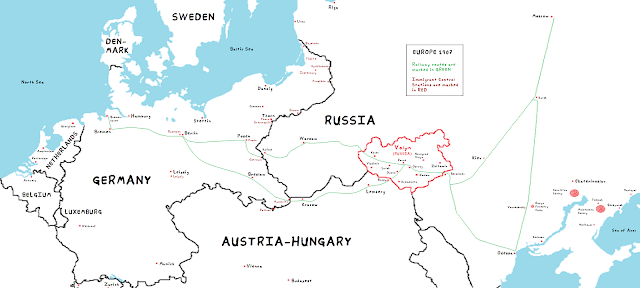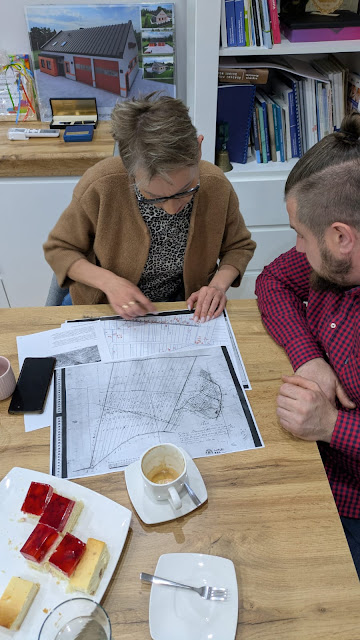I've said many times and people who know me have heard it: my inspiration for studying family history and Mennonite history was strongly influenced by a particular map I saw when I was quite young. I remember specifically studying this map that my Grandpa Ratzlaff had framed and sitting on his dresser.
This was a black and white illustrated map of a little village called “Leeleva”. It depicted a handful of little cottages apparently located in a forest somewhere. There were a few other small villages drawn in here and there, along with some roads, rivers, and railways, and even a saw-mill and a flour mill. In a fairly prominent spot on the map was a cemetery and right next to the cemetery was a little cottage marked “Andrew Ratslaff”. I remember being particularly intrigued by this map and as a child, in my mind, I could almost close my eyes and put myself into this village. And of course, Leeleva Village became a lot more important to me when Grandpa told me that this Andrew Ratslaff was his father – so this was the village of our ancestors. It was even further captivating to me – and mysterious - that this village was located somewhere in Russia – I was a kid growing up during the Cold War in the 1980s so the thought of a village somewhere in Russia – the mystery and intrigue of it all was overwhelming!
Over the years, of course, I've learned that the map comes from Jake Unruh's "From Village Life to Kansas Plains", a nine-page memoir about Mennonite village life in Volhynia in the very early 19th century. I've also learned about all the elements on the map - what they are in real life and where they're located. I now even have friends in nearby villages who have interpreted the map and have opinions regarding where great grandfather Andrew Ratzlaff's house stood.
But beyond that, the map has been inspirational to me and I've used it as a template to create more maps to illustrate the history of this Mennonite group - the Groningen Old Flemish centered at Przechowko, Poland. (hint: right click on the images, open in new tab, then zoom)




















































